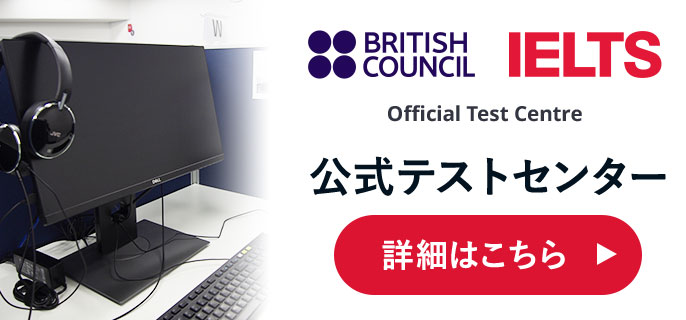
・「英検1級のリーディングパートってどうやって勉強するの?」
・「英検1級の合格ラインはどれくらいなの?」
英検1級受験予定の方もしくはすでに受験した方の中で、上記のようなお悩みはないでしょうか?
本記事では、英検準1級のリーディングパートの勉強法や英検1級の合格ラインについて詳しく解説していきます。
英検1級合格に必要なポイントを押さえて、合格スコアを目指しましょう。
英検1級のリーディング問題の合格ラインは何点?

英検1級には一次試験と二次試験があり、下記がそれぞれの試験の満点と合格ラインです。
一次試験は2550満点であり、2028点以上(得点率80%以上)が合格ラインとなります。
二次試験は850点満点であり、602点以上が合格ラインとなります。
リーディング問題の合格ラインは得点率約70%以上となっています。
また、英検には2016年度からCSEスコアが導入されています。
CSEスコアとは合否の判定だけではなく、リーディング、スピーキング、ライティング、リスニングのどのパートが苦手でどのパートが得意かをはっきり出してくれます。
ただ、合格基準がわかりにくくなったという声も聞かれています。
全41問中28問以上の正解を目指しましょう。
英検1級の難易度について
英検1級の難易度は、準1級の難易度とあまり変わらないといわれています。
ただし、準1級と比較すると英文が長くなっており内容も難しくなっています。
英検1級の合格には、10,000~15,000単語が必要です。
英検準1級には、9,000単語が必要といわれていますので単語数を比較しても難しくなっていることがわかるかと思います。
英検1級の合格率
英検1級の2015年の合格率は、12%です。
受験者の9割程度が不合格のことを考えると、合格は狭き門です。
英検1級の合格率は、2015年までしか公開されていませんが今も高い難易度の試験である事実は変わりません。
英検の中で最難関の1級を合格するために、本記事で紹介する対策を実施して効率的に勉強しましょう。
英検1級の詳しい試験内容については、以下のページで紹介しています。
英検1級リーディング問題の試験構成
英検1級のリーディング問題の試験構成について、紹介します。
リーディング問題は大問2「長文の語句空所補充」と大問3「長文の内容一致選択」が該当します。
問題数は16問で、内容は社会生活一般、芸術、文化、歴史、教育などさまざまな分野にわたります。
それぞれ使われている語句は数百前後のため、解答する時間配分を考えないと、時間切れのリスクがあります。
下記で大問ごとに分けて紹介していきます。
大問2「長文の語句空所補充」
大問2は、2つの長文に3つずつの空所が設けられていて、適切な語句を前後の文脈から読み解いて選択する問題です。
問題数は6問で、全文を読んで理解できないと問題が解けません。
下記は、2022年度に出題された大問2の問題です。
Spider Survival A fascinating species of jumping spider found across the eastern United States called Synemosyna formica has been observed ( 26 ). Biologists theorize this behavior stems from the fact that the spiders, with their solitary lifestyles, tend to be attractive targets for many predators. Ants, on the other hand, are less appealing prey, owing to their powerful jaws and the fact that they are rarely unaccompanied; a predator attempting to feast on one ant, for instance, would likely have to fight off numerous other aggressive ones that come to its aid. Taking advantage of ants’ fierce reputation, the spiders have developed certain behaviors to impersonate the insects, such as waving their front legs in a motion resembling that of ants’ antennae. When successfully performed, this helps the spiders avert predatory attention. S. formica has also come to bear a strong physical resemblance to ants. But while the adaptations are helpful for deceiving predators, they ( 27 ). The spiders’ back legs appear to have evolved to be longer and thicker, and their bodies have become slender and segmented, accentuating their antlike appearance when viewed from above a common vantage point for predators. Yet these changes appear to have rendered the spiders unable to perform the leaping action for which related species are known a consequence, perhaps, of the constraints of an antlike structure and body weight, according to biologists. And since this ability, which is crucial for hunting prey, has diminished, the spiders’ survival could be in jeopardy. One mystery is how S. formica manages to ( 28 ). Most types of jumping spiders employ showy, elaborate rituals to entice prospective partners. Attracting partners is no less important for S. formica, but such acts of courtship in the open would likely draw unwanted attention from predators. To get around this, the spiders seemingly recognize each other from afar. Although they appear able to signal that they are not ants without sacrificing the guise of their antlike behavior, the exact mechanisms behind this discreet action remain unclear. Biologists hope that by expanding research into these peculiar creatures they can deepen their understanding of how survival instincts drive adaptations in animals. (26) 1 trying to overpower larger species 2 significantly altering its diet 3 helping another species survive 4 mimicking another creature (27) 1 also assist the spiders in other ways 2 have made some body parts useless 3 may have come at a cost 4 likely occurred for other reasons (28) 1 locate new habitats 2 find potential mates 3 conceal its breeding locations 4 prevent predators from finding it
大問3「長文の内容一致選択」
大問3は、3つの長文を読み、選択肢の中から答えを選択する問題です。
問題数は10問で、最後の問題が問題数に比例して分量が多くなる傾向にあります。
配点は低いですが、読み込めば全問正解を狙いやすいです。
丁寧に読んで高スコアを狙いましょう。
また、英検1級の長文問題は日本語でも難しいような内容が出題されます。
科学や政治、文化など英語以外の勉強もしておくことがおすすめです。
下記が、2022年度に出された大問3の問題です。
かなりの長文となっていますので、集中力を保って一つずつ理解していく必要があります。
The Early Solar System The origin of our solar system has long been the subject of speculation. The most widely accepted explanation is the nebular hypothesis, which argues that the solar system began as a massive cloud of interstellar gas and debris that collapsed under immense gravitational forces. The resulting mass of swirling matter eventually formed into pockets of material that then came together to become the sun and planets. While this accounts well for some aspects of the solar system’s formation, other predictions derived from the hypothesis do not line up with the solar system’s current state. For example, in computer simulations based on the hypothesis, the masses of certain planets and the regions in which those planets reside were inconsistent with current astronomical observations. The discrepancies, however, could be due to the fact that the nebular hypothesis was originally based on the assumption that planets in our solar system formed in their current locations and have mostly remained there. Some of these mysteries may be close to being solved. The smaller planets of the inner solar system are believed to have formed from matter able to withstand the sun’s tremendous heat, such as rock and metal. Conversely, the gas giants Jupiter and Saturn are thought to have formed in regions farther from the sun, beyond what is referred to as the frost line, as temperatures at this distance are low enough for the matter that makes up gas giants to solidify. Scientists, however, have observed Jupiterlike gas planets in distant solar systems nicknamed “hot Jupiters” orbiting their suns at surprisingly close distances. To explain this, scientists proposed the concept of planetary migration, and a scenario named the “grand tack” was modeled, using Jupiter’s formation as a basis, to test the concept. In the scenario, Jupiter takes shape beyond the frost line, as is expected, but migrates toward the inner solar system, imitating hot Jupiters. However, as a result of gravitational forces from our solar system’s other gas giant, Saturn, Jupiter is drawn back out to its current location farther from the sun. Despite sounding farfetched, the scenario has been praised for plausibly explaining why hot Jupiters exist. The grand tack scenario may also provide clarity for other apparent inconsistencies in our solar system. When the computer simulations based on the nebular hypothesis projected that Mars should be much larger than it currently is, the proposed grand tack migration of Jupiter suggested an explanation. By factoring in Jupiter’s trajectory in the grand tack scenario, scientists realized the gas giant was likely scattering matter close to the sun that would otherwise have greatly increased Mars’s mass. Furthermore, had Jupiter not made its migration, planets in the inner solar system, which includes the area where Earth is now, could very well have become larger, uninhabitable worlds shrouded by gas. The vast majority of the inner regions of other known solar systems are populated by such planets, so scientists believe our solar system may be extremely unique in this regard. If the grand tack scenario proves to be correct, humankind owes a great deal of gratitude to Jupiter for the planet’s journey through the solar system. (35) According to the author of the passage, what is one problem with the nebular hypothesis? 1 Although it accurately predicts that planets can change locations in the solar system, its predictions do not apply to other objects in space. 2 It does not sufficiently explain how gravitational forces affected the size and location of the sun during the early formation of our solar system. 3 Using it to model the history of our solar system has produced results that do not match what we currently know about certain planets. 4 It was based partly on inaccurate astronomical theories about the manner in which solar systems in distant areas of the universe formed. (36) “Hot Jupiters” are significant because 1 they are evidence that the temperatures of frost lines detected in other solar systems have little connection to how planets are formed. 2 their size strongly implies that many of the other planets found in our solar system were once much smaller than they are now. 3 they support theories suggesting that the size of a star is directly related to the orbiting distance of its planets. 4 their existence appears to provide evidence to support the idea that planets do not always remain in the same orbits. (37) What can be inferred about the “grand tack” scenario based on the third paragraph? 1 It could reasonably explain why Mars was not pulled into the sun and destroyed during the early days of the solar system. 2 The probability of life evolving on Earth would likely have been a great deal lower if it had never occurred. 3 There is a lower chance of life existing on large planets in solar systems where such events have taken place. 4 Solar systems where such events have never happened are likely to have planets that resemble Jupiter and Saturn.
大問2「長文の語句空所補充」の対策ポイント
大問2「長文の語句空所補充」問題の対策ポイントは下記のとおりです。
それぞれのポイントについて下記で詳しく紹介していきます。
大問2の対策ポイント ・空所の前後関係をしっかりと読み取る ・文章全体を読み終わったらもう一度見直す ・考えに詰まったら別の問題に手をつける
空所の前後関係をしっかりと読み取る
語句空所補充問題の文章は「段落ごとに問題がひとつ振り分けられている」という特徴があります。
そのため、段落にある空所の前後関係を理解できれば解答できます。
最初からじっくり読み込んでいると、時間がなくなってしまう可能性があります。
空所の前後をとくに時間をかけて読み込むことで効率的に解答ができます。
文章全体を読み終わったらもう一度見直す
文章を最後まで読んだら、設問と回答を見直しましょう。
設問と回答をみることで、答えが長文のどこにあるかなんとなく推測できるかと思います。
推測した付近を再度簡単に読み直して、回答します。
文章の読み返しは時間が足りなくなるため、あまりおすすめはしません。
回答が書いてある付近を予想して、その付近を重点的に読んで回答することがおすすめです。
考えに詰まったら別の問題に手をつける
考えに詰まったら、次の問題に進みましょう。
英検1級では、文章量に対して解答時間が少ないです。
熟考するより別の問題を解いたほうが、時間の無駄になりにくいです。
一つの問題を考えすぎることが、タイムオーバーに繋がってしまいます。
時間内にできるだけたくさんの問題を解くためにも、まずはできる問題からどんどん解いていき、回答率を上げていきましょう。
大問3「長文の内容一致選択」の対策ポイント
大問3「長文の内容一致選択」の対策ポイントは下記のとおりです。
対策ポイントは、以下に紹介しています。
大問3の対策ポイント ・本文を読みはじめる前に問題文に目を通す ・キーワードを見つける
本文を読みはじめる前に問題文に目を通す
大問2とは逆に、かならず問題の先読みをしましょう。
長文内容問題では物語の全体像を把握したうえで設問に解答しなければならないので、まずは問題文に目を通しましょう。
問題文と選択肢を読んだあとに長文を読み始めます。
長文を読む際も、長文全文読むのではなく問題文や選択肢に書かれている内容を、文章の中から見つけましょう。
該当する内容を見つけたら、その部分を重点的に読み込んでどの選択肢が正しいかを選んでいきます。
本番前の練習をする時点から、上記の流れで問題を解いておくことで本番でも自然とこの流れで解くことができますので、事前勉強をしっかりして本番に臨みましょう。
キーワードを見つける
文章の中にあるキーワードは、内容の軸になっている場合が多いです。
問題文を先読みする際にキーワードを抜き出しておけば、解答する時にすぐ対応できます。
問題文には、登場する人物の名前や場所キーワードとなる動詞などが出てきます。
そのキーワードを見つけておくと、長文を読む際に比較的簡単に回答箇所が見つかります。
キーワードに関して、述べられている部分をすぐに見つけてその付近を入念に読み込みましょう。
おすすめ参考書・問題集・勉強法を紹介

英検1級の対策としておすすめの参考書、問題集、勉強法を紹介します。
DAILY30日間 英検1級集中ゼミ
まずは、旺文社のDAILY30日間英検1級集中ゼミです。
その名の通り、30日間で総仕上げまでできる内容となっています。
1日に30分の学習×30日間でゼミ完了できるため、無理なく継続することができるのも本書の特徴の一つです。
2016年度に英検1級の問題がリニューアルされましたが、リニューアル問題にも対応しています。
基礎編、応用編、二次試験対策も掲載されているので、本書1冊ですべてを網羅できる1冊となっています。
速読速聴・英単語 Advanced 1100
続いて、Z会の音読速聴・英単語Advanced1100です。
本書の特徴は、英字新聞や英文放送をネイティブの方が話しているのを収録した書籍です。
比較的難易度の高い1100語を掲載しており、聞く力や単語・語彙力を鍛えることができます。
また、英英定義や章末問題も収録されているため、覚えた単語をアウトプットしやすい作りとなっています。
英文の音声はWEBサイト上で聞くことができますので、実際のネイティブの音源を聞いてリスニング力や語彙力を上げて英検1級に臨みましょう。
英検1級 過去6回全問題集
次に、旺文社の英検1級過去6回全問題集です。
その名の通り、英検1級の過去問が6回分収録されている過去問題集です。
本書の特徴は、解説が充実していることです。
解説が充実していることで、自分がなぜ間違えたのか、次に間違えないようにどうすればよいかの対策がしやすくなります。
また、過去問を解いている内に試験の傾向がつかめてきます。
本番でのタイムオーバーを避けるためにも、過去問を実施するときから時間配分を意識して取り組んでおきましょう。
英検1級 長文読解問題120
同じく、旺文社の英検1級長文読解問題120です。
長文問題が120題収録されている問題集です。
英検1級の長文は長いうえに内容も難しいので、事前のトレーニングが必須となります。
120問を繰り返し解いて、時間配分を身につけておきましょう。
本書は、ウォーミングアップ問題と過去問、オリジナルテスト2回分が収録されています。
英検1級勉強法の解説も掲載されていますので、参考にしてみましょう。
過去問・問題集を繰り返し学習するメリット
過去問・問題集を繰り返し学習するメリットについて紹介します。
繰り返し問題を解き、解法や解答の時間配分を意識することで、速読の技術が身につきます。
また、繰り返し問題を解くことは多読に繋がり、「難しい英文を読む」ことに慣れます。
英検1級は、時間との勝負でもありますので、なるべくたくさんの問題を繰り返し解いて、本番で時間内に終われるように訓練しておきましょう。
リーディング問題の勉強のコツ
リーディング問題の勉強のコツは下記のとおりです。
リーディング問題の勉強のコツ ・大問2と3の解く時間配分を意識して、勉強する ・精読をすること
大問2と3の解く時間配分を意識して勉強する
英検1級の勉強をするときから、時間配分を意識して勉強しておきましょう。
一次試験に与えられる時間は100分です。
そのうちの6割をリーディング問題に割くため、解答にかかる時間配分の意識や問題文の速読力が求められます。
予想問題や過去問を解くときは、実際に時間を計りながら解く方法がおすすめです。
下記がリーディング問題の時間配分の目安となります。
なるべく下記の時間配分で各大問を終わらせられるようにトレーニングしましょう。
英検1級のリーディング問題 時間配分の目安
| 問題 | 目安時間(分) |
| 空所補充問題(大問2) | 10 |
| 長文問題①(大問3) | 15 |
| 長文問題②(大問3) | 15 |
| 長文問題③(大問3) | 20 |
精読
精読することも、とても有用な勉強方法です。
過去問・問題集を解く中で、 ・「読めない文章を見つけ」 ・「なぜ読めないかを考え」 ・「読めるような学習」 上記のような心がけをすることが大切です。
読めない原因として英単語や英文法の知識が欠落している可能性があるため、英単語と英文法の勉強も並行して進めていきましょう。
問題が解けなかった原因を探して、その原因に対してどうすれば改善できるかを考えて勉強に取り組みましょう。
まとめ

リーディング問題の合格ラインは得点率約70%以上といわれています。
英検1級は問題の文章が長く、解答する時間が足りなくなる場合があります。
過去問や問題演習などを使い、試験時間の配分をうまく構成できるようトレーニングしましょう。
以下が、本記事のリーディング対策ポイントとなります。
大問2の対策ポイント ・空所の前後関係をしっかりと読み取る ・文章全体を読み終わったらもう一度見直す ・考えに詰まったら別の問題に手をつける 大問3の対策ポイント ・本文を読みはじめる前に問題文に目を通す ・キーワードを見つける
英検1級は、合格率も約1割程度という高難易度の試験となります。
事前に試験勉強をし、合格点を超えるように対策をおこないましょう。

















